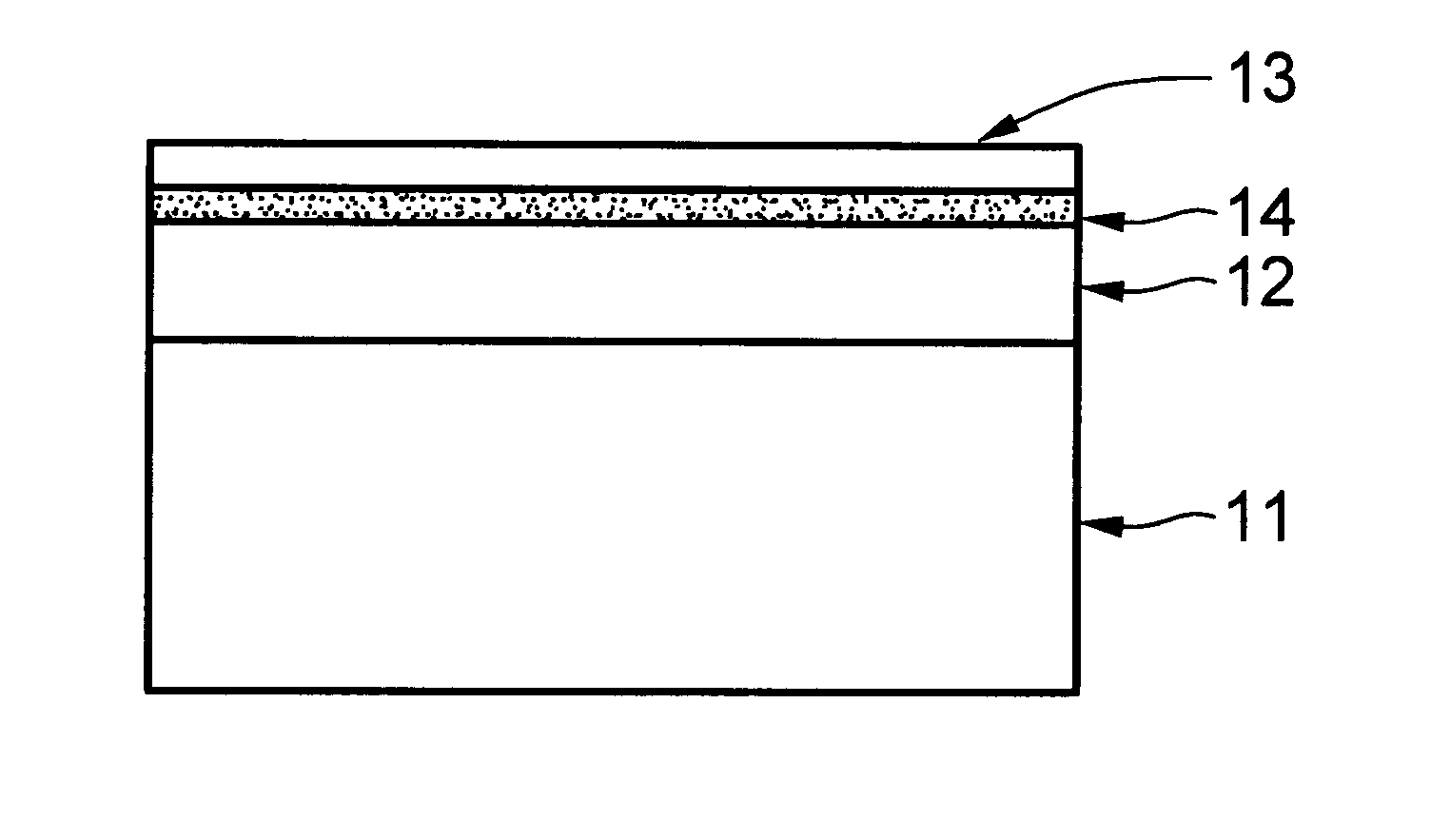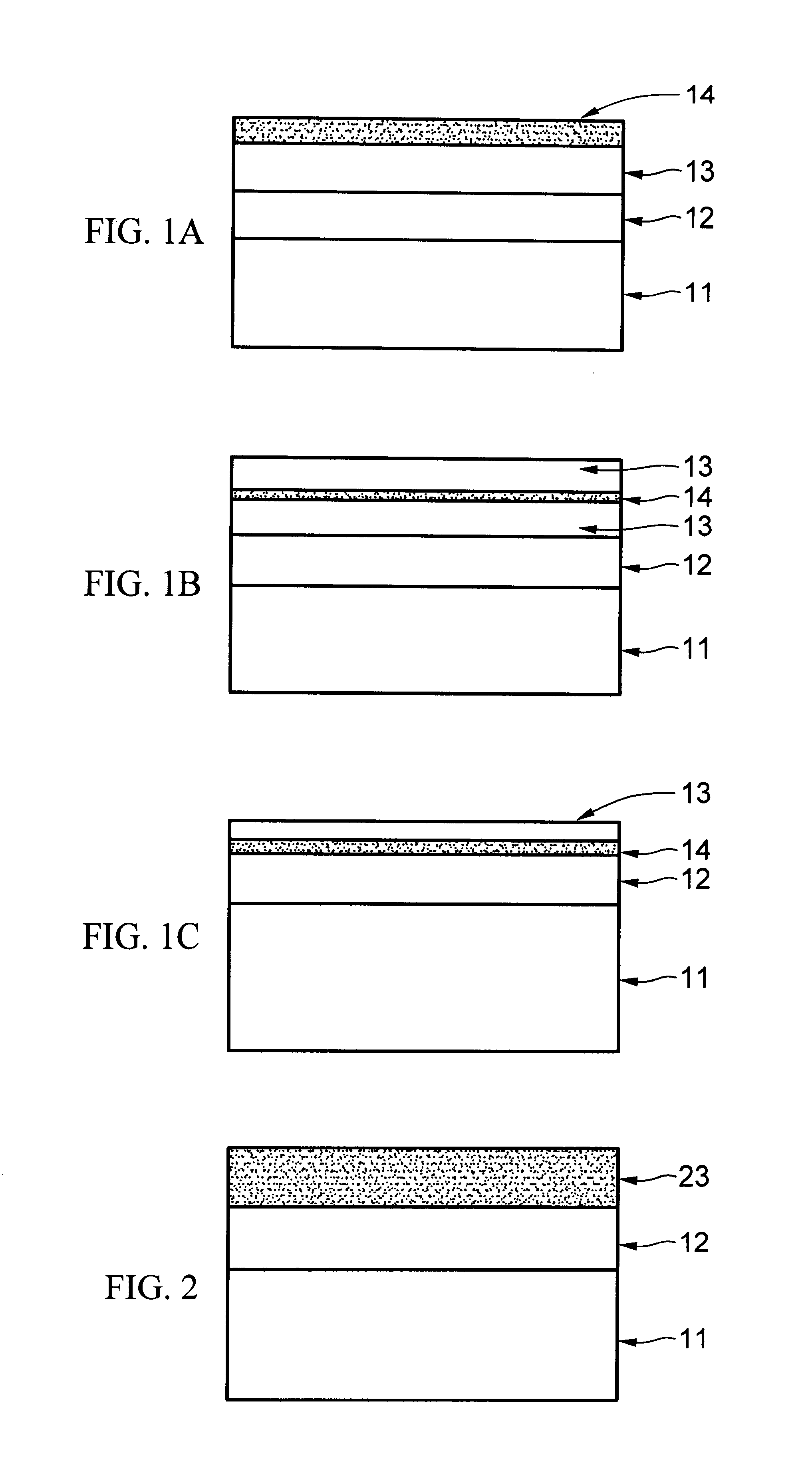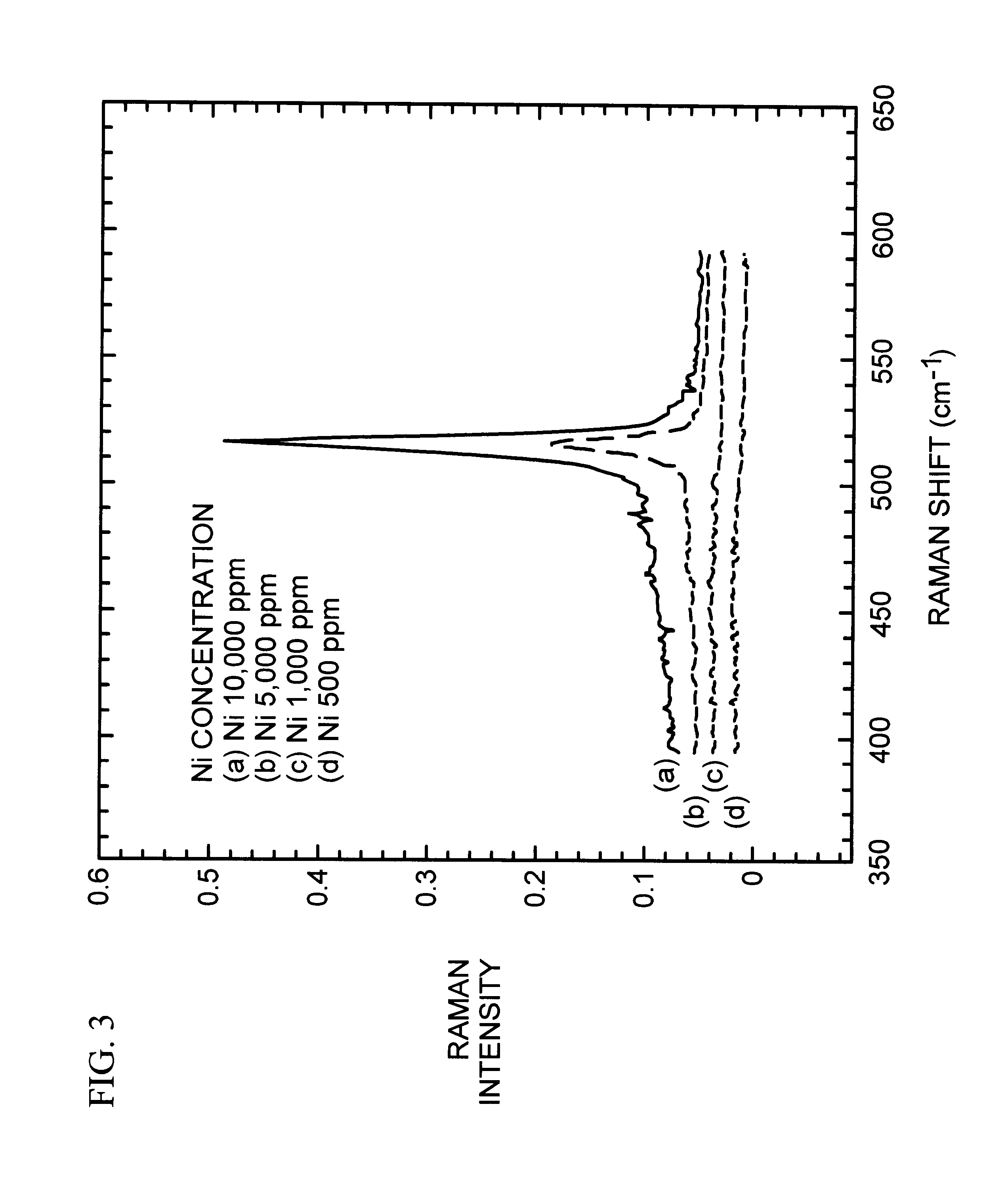Method for crystallizing amorphous layer
a technology of amorphous layer and crystallization method, which is applied in the direction of crystal growth process, polycrystalline material growth, gel state, etc., can solve the problems of inapplicability to glass substrates, and inconvenient crystallization by laser crystallization
- Summary
- Abstract
- Description
- Claims
- Application Information
AI Technical Summary
Benefits of technology
Problems solved by technology
Method used
Image
Examples
Embodiment Construction
FIGS. 1A-1C illustrate three examples of crystallization of amorphous silicon making use of a nickel solution in accordance with a first preferred embodiment of the present invention. The nickel solution is prepared by dissolving nickel in acid solution, such as nitric solution or hydrochloric solution. In cross section of the respective substrates in the following embodiments, amorphous silicon layer is formed in the 100 to 10,000 .ANG. range of thickness and nickel film is around 0.1 to 100 .ANG. thick.
As shown in FIG. 1A, amorphous silicon layer 13 is first formed on an insulating substrate 11 and then coated with a nickel solution, forming a nickel film 14. The insulating substrate 11 is preferably normally made of quartz, glass or an oxide layer. A buffer layer 12 may be interposed between the insulating substrate 11 and the amorphous silicon layer 13 in order to prevent impurities of the insulating substrate 11 from entering the amorphous silicon layer 13 during the crystalliz...
PUM
| Property | Measurement | Unit |
|---|---|---|
| thickness | aaaaa | aaaaa |
| thick | aaaaa | aaaaa |
| temperatures | aaaaa | aaaaa |
Abstract
Description
Claims
Application Information
 Login to View More
Login to View More - R&D
- Intellectual Property
- Life Sciences
- Materials
- Tech Scout
- Unparalleled Data Quality
- Higher Quality Content
- 60% Fewer Hallucinations
Browse by: Latest US Patents, China's latest patents, Technical Efficacy Thesaurus, Application Domain, Technology Topic, Popular Technical Reports.
© 2025 PatSnap. All rights reserved.Legal|Privacy policy|Modern Slavery Act Transparency Statement|Sitemap|About US| Contact US: help@patsnap.com



